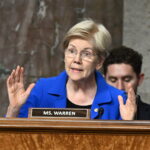
Nathan Smith has already sent three kids to college. But he’s never seen anything like the volume of recruiting materials pouring in since his fourth child reached her senior year in high school this fall.
“If you put the other three together and multiplied it by four, that’s how much mail she’s gotten,” said Smith, who takes a professional interest in this as chair of the Northern Kentucky University Board of Regents.
“What I see is that they’re fishing,” he said of the institutions that are appealing to his daughter to apply. “They can’t catch the fish they want with just one pole. They’ve got to put in 10 poles. I think they’re casting the net further and wider.”
As enrollment in colleges and universities continues to decline — down by more than two million students, or 10 percent, in the 10 years ending 2022 — they’re not only casting wider nets. Something else dramatic is happening to the college application process, for the first time in decades:
It’s becoming easier to get in.
Colleges and universities, on average, are admitting a larger proportion of their applicants than they did 20 years ago, new research by the conservative think tank the American Enterprise Institute finds.
The median acceptance rate at bachelor’s degree-granting universities and colleges was 7.6 percentage points higher in 2022 than it was in 2012, AEI found. Those are the most recent available admission figures reported to the federal government, and do not include institutions with open admission, which take 100 percent of applicants.
Related: Interested in innovations in higher education? Subscribe to our free biweekly higher education newsletter.
This comes after a period of steadily increasing competition to get into college since around the turn of the millennium, which aggravated fears among students and their families that they’d be rejected by the institutions of their choice. Widely reported impossibly low single-digit acceptance rates at the nation’s most highly selective universities and colleges only made that apprehension worse.
Not surprisingly, 45 percent of 18- to 29-year-olds think it’s harder to get into college than it was for their parents’ generation, a survey by the Pew Research Center found.
In fact, 87 percent of nonprofit four-year colleges in 2022 took half or more of the students who applied to them, up from 80 percent in 2012, the AEI study found.
“It’s really a small proportion that are accepting only single-digit proportions of their applicants,” said Preston Cooper, a senior fellow at AEI, who conducted the research. “You’re going to get in somewhere, and you’re going to get into somewhere decent.”

Separate data from the National Association for College Admission Counseling, or NACAC, shows that 78 percent of first-year applicants to public and 70 percent to private colleges and universities get in. That’s up from 68 percent and 65 percent, respectively, since 2014.
Being accepted to college “is easier than people think,” said Melissa Clinedinst, NACAC’s director of research initiatives and partnerships. “That’s the message we’ve been trying to get out for years.”
It’s basic math. Enrollment has been going down for more than 10 years. Freshman enrollment this fall dropped by another 5 percent. And federal data show the number of high schoolgraduates going directly to college has fallen from a high of 70 percent in 2015 to 62 percent in 2022, the most recent year for which the figure is available.
Related: The fastest-growing college expense may not be what people think
As fewer people apply, colleges are forced to accept a larger proportion of them. And with a projected decline in the number of 18-year-olds, Cooper said, it’s likely that getting into college will continue to get easier.
The chances of getting into Fordham University rose from 43 percent to 54 percent between 2012 and 2022, federal data analyzed by The Hechinger Report found; into George Washington University, from 33 percent to 49 percent; into Hofstra, from 59 percent to 69 percent; into Indiana University Bloomington, from 74 percent to 82 percent; into Marquette, from 55 percent to 87 percent; and into Michigan State, from 71 percent to 88 percent.
Fordham spokesman Bob Howe said that university’s acceptance rate went up, in part, because high school seniors are applying to more colleges, which “has required us to temporarily shift our acceptance rate.”
At Indiana University Bloomington, spokesman Mark Bode said the higher acceptance rate was due partly to an increase in the size of entering classes. Bode provided data showing that standardized test scores and high school grade-point averages of admitted students have also gone up.
The other institutions did not respond to requests for comment.
The news for students isn’t all good. To lock in the dwindling pool of customers, some universities and colleges are expanding their use of so-called early decision, which generally requires successful applicants to accept an offer of admission far earlier than the usual May 1 deadline.

That not only leaves fewer seats available through the general admission process, data from the Common Application shows; it also largely excludes low-income and first-generation students, who may not be aware of the option or can’t afford to agree to an offer before learning how much institutional financial aid they’ll get.
“There’s just not a world where they can apply early decision to that institution without knowing whether or not they can afford it,” said Karla Robles-Reyes, chief program officer at OneGoal, a nonprofit that provides advising and support to low-income students.
Many top schools take at least half of their students through early decision, including the University of Pennsylvania and Dartmouth, Brown, Cornell, Duke and Vanderbilt universities, according to Education Reform Now, which advocates for students from lower-income families.
Eighty-four selective universities and colleges admit a third or more of their students through early decision, and 55 of those have in the last few years increased the proportion who get in this way, Education Reform Now reports.
Related: Some colleges aim financial aid at a declining market: Students in the middle class
At Tulane, the proportion of applicants admitted through early decision rose from 28 percent in 2018 to 68 percent in 2022; at Grinnell, from 44 percent to 69 percent; and at Middlebury, from 58 percent to 69 percent, according to data each institution is required to disclose.
The perception that admission is hypercompetitive has historically worked in colleges’ favor. Many hype their selectivity and benefit from the idea that they’re exclusive. This also fuels an industry of private college counselors, tutors and test prep companies.

“Colleges do want to cultivate this idea that they’re prestigious and selective, and you should want to pay a lot of money for them,” said Cooper, of AEI.“They like the idea of being a sought-after good.”
That can discourage some young people from applying.
“We worry in general about the perception that college is harder to get into than it actually is, and that it might limit students’ aspirations,” said NACAC’s Clinedinst.
Yet only 33 colleges or universities nationwide took 10 percent or fewer of the people who applied, according to NACAC.
At a few of those, the competition has gotten even tougher. Brown University accepted 5 percent of applicants in 2022, down from 17 percent in 2002, the AEI study found.
But most other institutions are getting easier to get into, not harder, Cooper found.
“If students internalize this message, that could reduce some of their anxiety,” he said.
Contact writer Jon Marcus at 212-678-7556 or jmarcus@hechingerreport.org.
This story about college acceptance rates was produced by The Hechinger Report, a nonprofit, independent news organization focused on inequality and innovation in education. Sign up for our higher education newsletter. Listen to our higher education podcast.
The post A trend colleges might not want applicants to notice: It’s becoming easier to get in appeared first on The Hechinger Report.
Nathan Smith has already sent three kids to college. But he’s never seen anything like the volume of recruiting materials pouring in since his fourth child reached her senior year in high school this fall. “If you put the other three together and multiplied it by four, that’s how much mail she’s gotten,” said Smith,
The post A trend colleges might not want applicants to notice: It’s becoming easier to get in appeared first on The Hechinger Report. Higher Education, Higher education access, Higher education affordability, Higher education completion The Hechinger Report








